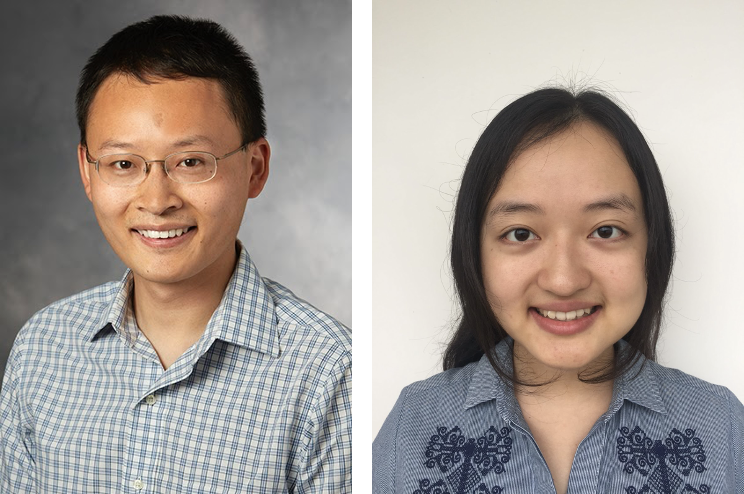Trial Pathfinder, a new artificial intelligence (AI) model developed by Stanford researchers, could help researchers broaden eligibility criteria for clinical trials without compromising participants’ safety.
The technology was developed by biomedical data science professor James Zou and Ruishan Liu, a fifth-year electrical and electronics engineering Ph.D. student in Zou’s lab, in partnership with Genentech and was published in “Nature” on April 7.
Clinical trials are the approval process every new drug has to go through to get from test tubes to patients. For a single drug, this can take an average of 10 years and cost billions of dollars. With only about 11.8% probability of passing all three clinical trial phases, much is at stake to ensure that the process goes smoothly.
One factor that often causes delays in the progress of a clinical trial is patient recruitment. According to Zou, the process for deciding clinical trial eligibility criteria is fairly ad hoc.
“Oftentimes what happens in pharma companies is that they’ll look at what the previous trial did, find one that’s most similar, and then [adapt it for their current study] after making a few or no changes to it,” he said.
There is currently no clear guideline about who should or should not participate in a trial, which results in substantial heterogeneity in patients recruited even for drugs that have similar mechanisms of action. These variability create subsequent challenges in comparisons of study outcomes, according to Zou.
Liu, the first author on the article, said she was surprised that in most cases, a more relaxed approach to the eligibility criteria would benefit the trials. “We can use real-world data to guide the future design of clinical trials so that [pharmaceutical companies] can enroll more patients,” she said.
The motivation for having a more inclusive clinical trial is to ensure that the efficacy and safety of the drug is tested on a population that accurately represents those who will eventually use the drug.
“It is important from a clinical perspective to have a broad inclusive representation because we need to be able to use the knowledge generated from the trial to inform treatment for diverse cancer patients,” said Lidia Schapira, a medical oncologist and associate professor of medicine at Stanford not associated with the study. “This type of study needs to be taken seriously by people who are conducting [both] the science and the trial.”
Unlike current approaches that rely on previous clinical study designs to inform eligibility criteria, Trial Pathfinder studies real data obtained from patients’ electronic health records, made available by a company called Flatiron. It simulates clinical trials for the drug with different eligibility criteria and calculates the trial hazard ratios, a scientific term that compares the survival rates of those given and not given the drug.
Researchers found that many common criteria used to exclude potential clinical trial participants had a minimal effect on the hazard ratios, further determining that only 30% of patients who ultimately were given the drug of interest would meet its clinical trial eligibility.
One of Flatiron’s largest datasets is on patients with advanced non-small-cell-lung cancer. While this was the disease that Zou’s lab focused on in their current study, they showed that the framework could potentially be translated to other diseases.
Women and older patients, who would’ve been considered eligible using a more relaxed approach, were frequently excluded by the original criteria, which included measures like blood or enzyme counts.
“[The criteria] are not set out to intentionally exclude women or older patients, but they do set thresholds for different laboratory values,” Zou said. “By setting those thresholds to be fairly strict, it excludes a lot of women, older patients and, in some cases, minorities.”
Strict eligibility criteria are often implemented to ensure the safety of the participants. However, many have started to question whether these criteria translate to real risk.
Using past cancer data of 61,094 de-identified patients from 280 clinics in the U.S., Liu and Zou were able to show that relaxing and streamlining the eligibility criteria using Trial Pathfinder not only doubled the number of eligible patients on average, it also lowered the trial hazard ratio, which correlates to overall patient survival.
“This study is very important because it really challenges prevailing dogma that having a rigid criteria will help ensure patients’ safety,” Schapira said. “Based on the finding of this paper, it seems that relaxing restrictive eligibility criteria has a little chance of harming future trial participants and [has] the potential of assisting clinicians to provide better advice to future patients.”
According to Zou, the lack of data often pushes researchers and clinicians to err on the side of caution. However, this could greatly hamper the progress of clinical trials due to the difficulty in enrolling enough patients. With the increasing availability of patients’ data, more relaxed criteria can be implemented while still maintaining high safety standards for the patients that do enroll in these studies. More relaxed eligibility may in turn drive the progress of the clinical trials and expedite patients’ access to the new treatment, according to Zou.
“We’re actually quite excited because our collaborators in Genentech and Roche are already building a product based on Trial Pathfinder,” Zou said. “Our ultimate goal is to eventually make this product available to other biopharma companies so that it could be useful for the entire industry.”
